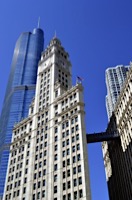
Have you ever thought about the names of the marquee companies, headquartered in Wisconsin, that are our economic calling cards – Oshkosh Corp., S.C. Johnson, Johnson Controls, Manitowoc Company, Harley-Davidson, Briggs & Stratton, Johnsonville, Kohl’s, Kohler and Quad Graphics? These companies all have one thing in common: They were named after the Wisconsin municipality of their founding or the last name of their founders.
There is no truer evidence of entrepreneurial spark.
However, spark requires fuel to ignite and entrepreneurial spark requires capital.
That’s the problem. There is not enough venture capital in Wisconsin, a state that has all the other elements for success in today’s tech-based economy. The state’s assets include a strong tradition of entrepreneurship, above-average research and development investment, high production of patents and other intellectual property, and a skilled work force created, in large part, by the state’s education system. Wisconsin also has one of the strongest angel capital foundations in the country.





















